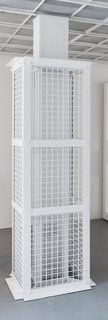ConfusedJew wrote: ↑Sat Aug 02, 2025 11:25 pm
We're on a bit of a detour here but I will allow it and then I will circle back to the ventilation before going back to the Markiewicz report.
It seems like you guys want to know how the gas devices were removed in order to accelerate the process since leaving it on the ground would have really slowed things down.
This is a pretty specific technical detail but it matters for mechanics. I would expect there to be a lot of inconsistencies across all of the different reports on this detail but I would naturally think that those who actually did the gassing, would be more credible.
I'm just trying to prove at this point that it was possible for them to deal with the extended gassing period and then you can tell me where there is evidence against it, if it even exists.
From what I'm seeing:
Documents from the Auschwitz Central Construction Office, such as those cited in The Chemistry of Auschwitz by Carlo Mattogno, mention the installation of "wire mesh insertion devices" (Drahtnetzeinschiebevorrichtung) in the gas chambers. These devices were designed to streamline the introduction and potential retrieval of Zyklon B, indicating a deliberate mechanism for handling the canisters or residues.
Rudolf Höss, the Auschwitz commandant, testified during the Nuremberg Trials (1946) and in his memoirs that Zyklon B was introduced through openings in the gas chamber roofs. While he did not detail the removal process, he confirmed the use of columns and the rapid cycling of gassing operations, implying that any residual material was managed efficiently to maintain the killing schedule.
IN the Hamburg Zyklon B Trial (1946), testimonies from SS personnel and suppliers, such as Bruno Tesch, confirmed that Zyklon B was used in a way that minimized handling time. The canisters were designed for quick opening and emptying, and the wire mesh columns allowed for easy access to any remaining material post-gassing, as described by witnesses.
The wire mesh columns were a critical innovation in Crematoria II and III, allowing SS personnel to insert Zyklon B and retrieve any residues from outside the chamber, minimizing exposure and speeding up the process. Most Zyklon B pellets vaporized during the gassing, leaving little residue, but the columns ensured any remaining material could be cleared quickly to prepare for the next cycle.
Inventory Number 933: This blueprint, preserved in the Auschwitz-Birkenau State Museum archives, depicts the basement plan of Crematorium II (Leichenkeller 1, the gas chamber). It shows four square openings in the roof, corresponding to the locations of the wire mesh columns used for Zyklon B insertion. These openings, approximately 70 cm x 70 cm, were fitted with gas-tight lids and connected to wire mesh columns extending from the roof to the floor.
Drawing 2003 (December 19, 1942): This technical drawing details the cross-section of Crematorium II, including the ventilation system and the roof openings. The columns, referred to as "Drahtnetzeinschiebevorrichtung" (wire mesh insertion devices) in related SS correspondence, are indicated as hollow structures designed to hold Zyklon B pellets and allow for their retrieval. The design shows an inner removable core or basket-like structure within the columns, which facilitated the removal of any residual Zyklon B material after gassing.
Inventory Number 2197: This blueprint for Crematorium III mirrors the design of Crematorium II, confirming the consistent use of four wire mesh columns in the gas chamber. The columns’ placement and structure are explicitly marked.
After the Nazis demolished Crematoria II and III in 1944–1945, investigators found physical evidence of the roof openings in the collapsed concrete slabs. For example, a 1945 Soviet investigation and later studies by the Auschwitz-Birkenau State Museum identified four holes in the roof of Crematorium II’s gas chamber, matching the blueprint specifications.
What are the objections to this?

